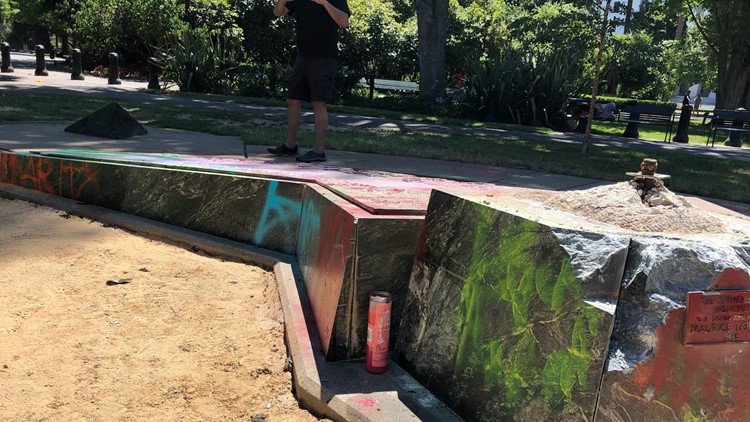SACRAMENTO, Calif — A bill from the first California Indian elected to the state assembly is looking to start the conversation about replacing the Junipero Serra statue at the Capitol.
The statue was placed on the grounds back in 1967 and stood there for decades until being unceremoniously torn down by demonstrators in July of 2020. The statue was a tribute to the Spanish priest who led the development of the California mission system, but that legacy isn’t without controversy. According to Stanford University, the mission system that was established by Serra also led to harm and violence on Native Americans.
The statue was ultimately recovered, but it has been idling in storage ever since being torn down, a spokesperson for the Department of General Services told ABC10.
While Assemblyman James Ramos (D-40) doesn’t agree with how the statue came down, he does believe it opens up an opportunity for discussion.
“Now with the Junipero Serra statue down, again I don’t condone the violence… or even toppling the monuments, but there should be a genuine discussion before that statue gets put back up to hear the valid frustration that people have of the reasons why that statue came down in the first place,” he said.
Ramos, a Serrano/Cahuilla Indian, grew up on the San Manuel Indian Reservation. He said that he carries a passion as the first California Indian elected to the state assembly to share the story of what happened to the California Indian people. To him, he’s the voice at the table that was missing back in 1967.
“When you ask me is there a passion, a desire, the answer is yes,” Ramos said. We’ve got to get the truthful impact of what is happening to the California Indian people and this is a start in advocating that awareness.”
While he’s a voice in the legislature, he doesn’t want to be the only one. Ramos wants the local tribes to have input in this conversation as well.
“By introducing AB 338, we start that process of that dialogue of including the California Indian people and, in particular, the local tribes from here in the Sacramento area to have a voice and a say that then what would go up in its place,” he said.
Support for the bill includes six Northern California tribes: Wilton Rancheria, Buena Vista Rancheria of Me-Wuk Indians, Chicken Ranch Rancheria of Me-Wuk Indians, Ione Band of Miwok Indians, Shingle Springs Band of Miwok Indians and the Tuolumne Band of Me-Wuk Indians.
“A statue of Junipero Serra on Capitol grounds represents a double injury. The Miwok and Nisenan people have lived in this region since time immemorial before the hostile takeover of Native lands by settlers, land barons and gold miners who established Sacramento and the State Capitol,” said Jesus Tarango, Chairman of Wilton Rancheria, in a news release. “The statue of a figure that represents the Mission period—another earlier time of genocide, slavery, and other degradations imposed upon California Indians—strikes twice at our history. We have yet to see a full telling of what it took to build the State Capitol and who paid that cost. This bill will begin to tell that history for us and for future generations.”
While the statue had previously been up for decades, Ramos said things have changed over that period of time to now. He noted that, in 2015, Pope Francis apologized for the Church’s treatment toward the Native American people in America. According to the Associated Press, the apology was significant due Francis’ planned canonization of the Junipero Serra as saint, however, Serra was ultimately canonized as one later that year.
“That statement came out in 2015 yet here in 2021 we have not had that meaningful dialogue,” Ramos said.
He believes his bill is the push for advocacy to have those missing voices heard and to possibly have a new monument put up with input from the local tribes.
“We owe it to all those living in the state of California to hear the factual accounts of what truly happened here in the state,” Ramos said.
WATCH ALSO:



